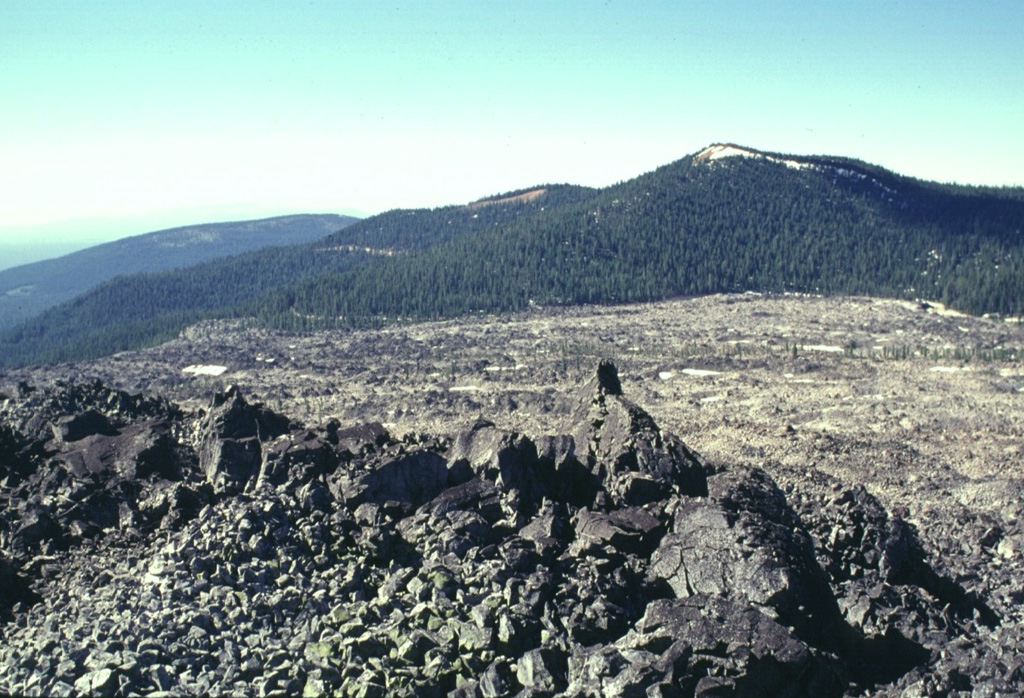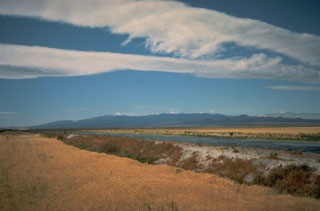Image GVP-06589

The Glass Mountain obsidian flow buries much of the eastern rim of Medicine Lake caldera. The massive 1 cu km flow traveled south towards Lyons Peak (upper right) before the bulk of the flow was diverted to the east and descended the caldera's outer flank. The latest event at Glass Mountain produced the craggy rhyolitic obsidian dome seen in the foreground. The roughly 900-year-old flow is the youngest and largest of a series of Holocene rhyolitic and dacitic lava flows at Medicine Lake.
Photo by Lee Siebert, 1998 (Smithsonian Institution).
![]() This image is made available under the Public Domain Dedication CC0 license, but proper attribution is appreciated.
This image is made available under the Public Domain Dedication CC0 license, but proper attribution is appreciated.

Medicine Lake
